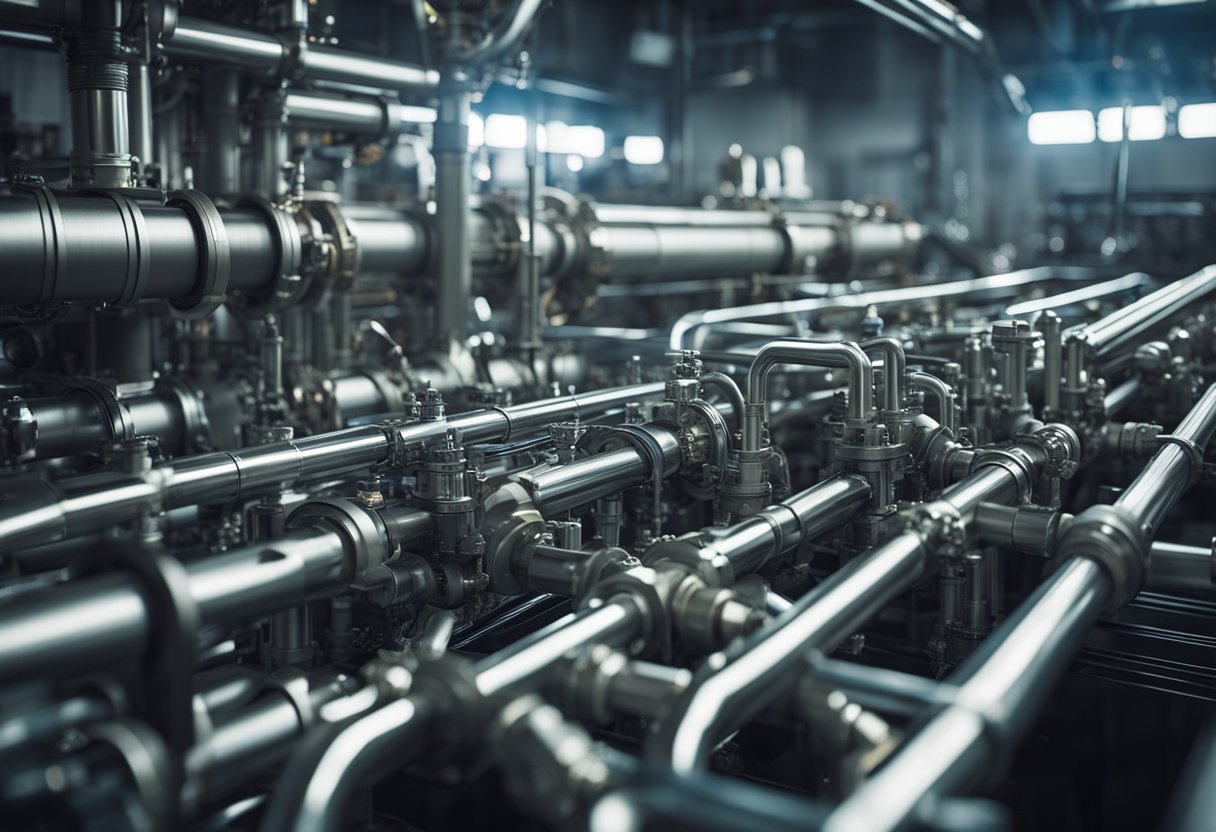
Environmental control and life support systems (ECLSS) are quintessential for sustaining life in the closed environments of spacecraft and space habitats. These sophisticated systems replicate various functions that our planet naturally provides, such as air purification, water recycling, and waste management. By carefully managing atmospheric conditions, ECLSS enables astronauts to live and work in space for extended periods, ensuring they have access to clean air, potable water, and a safe living environment.
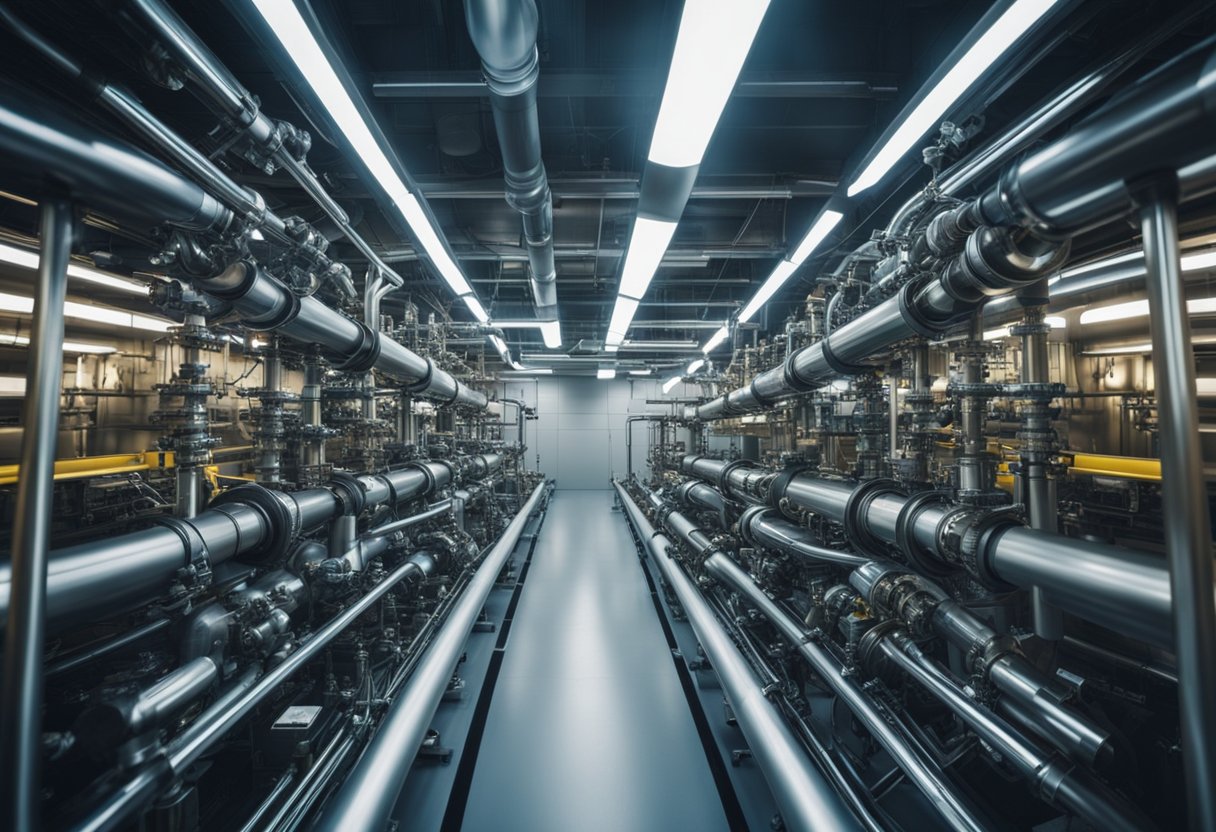
Developing and integrating these systems requires a cross-disciplinary approach, combining principles from engineering, biology, and chemistry. Innovations in ECLSS have evolved substantially since the early days of space exploration. From the basic life support mechanisms used during the Mercury and Apollo missions to the advanced regenerative systems aboard the International Space Station, the evolution of these systems underscores the technological advancements that have made long-duration space missions feasible. Ensuring astronaut health remains a priority, making ECLSS one of the most critical components for current and future missions, including the potential for space tourism.
In ensuring the safety and well-being of astronauts, the principles of life support systems are imperative. These systems are designed to maintain a stable environment within spacecraft and habitats, regulating factors such as air composition, temperature, and waste processing.
Environmental control within life support systems is primarily concerned with managing the spacecraft’s atmospheric conditions. It involves the regulation of temperature, humidity, and air pressure to levels suitable for human life. Critical to this process is the removal of carbon dioxide from the cabin air and the management of airborne pathogens and trace contaminant levels to prevent health hazards.
At the core of life support fundamentals is the provision and recycling of vital consumables: oxygen and water. Life support systems generate oxygen for breathing and ensure that the water aboard is purified and safe for consumption. Additionally, these systems cater for food storage and waste management to uphold astronauts’ health and hygiene throughout the mission.
Employment of closed-loop systems is essential to maximise resource efficiency in space. Such systems aim to recycle waste products back into usable resources, significantly reducing the need for resupply missions. For instance, urine and humidity condensate are processed back into potable water, while carbon dioxide can be converted into oxygen through various methods, including electrolysis and the Sabatier reaction.
Through these principles, life support systems create the possibility for sustainable space travel, playing a crucial role in current and future missions beyond Earth’s atmosphere.
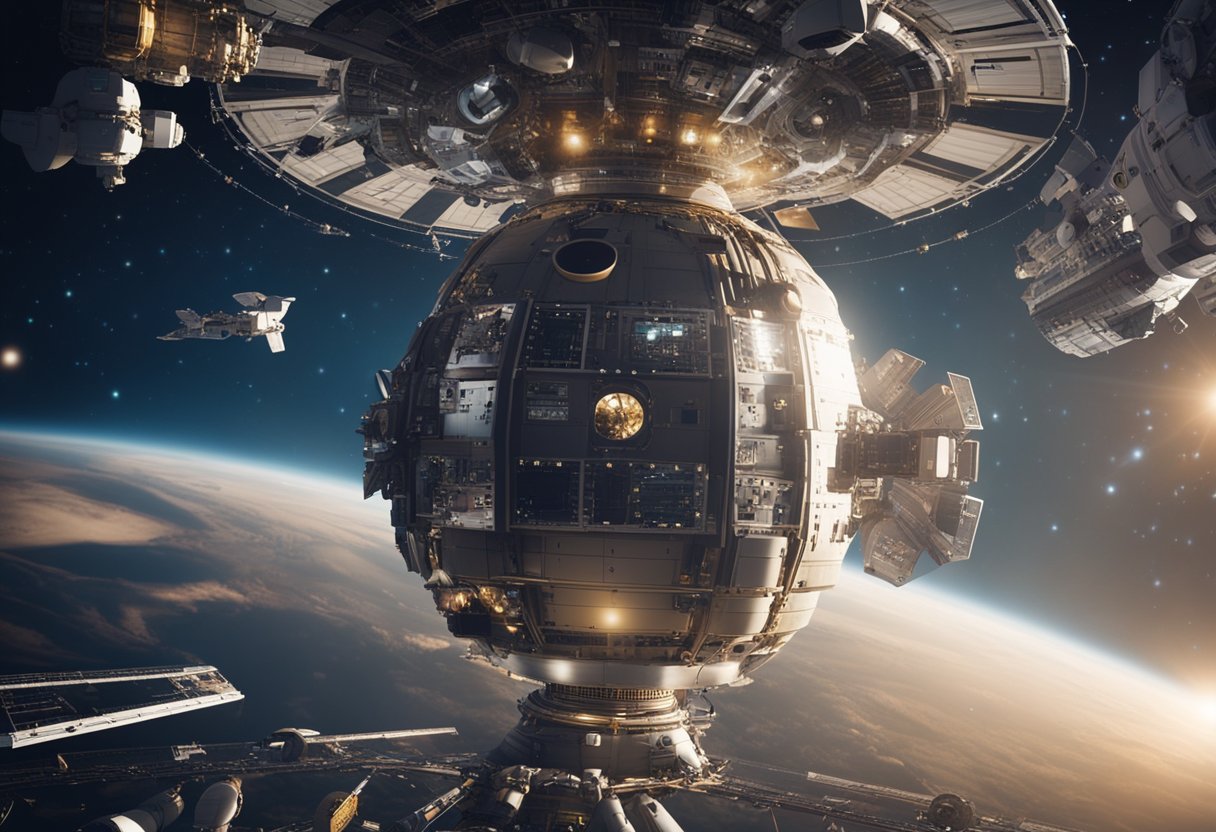
Environmental control and life support systems (ECLSS) have been essential for human spaceflight, evolving from simple setups in early missions to complex, regenerative systems in use today. Our focus will encompass the progression from America’s first manned space programme, Mercury, to the cutting-edge advancements in the International Space Station (ISS).
During the Mercury missions, ECLSS was rudimentary. There were basic systems that provided oxygen for breathing, removed carbon dioxide, and regulated temperature and pressure. When the Apollo programme commenced, advancements were made to include water recovery from fuel cells and waste management systems.
The Space Shuttle era marked significant improvements in ECLSS. It introduced more refined air filtration methods and the capability to sustain larger crews for extended periods. Functions from the previous programmes were optimised, and new technologies, such as the regeneration of oxygen from CO2 and the thermal control system, were integrated to enhance reusability.
NASA’s development reached new heights with the ISS. The station featured a fully regenerative ECLSS, managing everything from oxygen generation to advanced water recovery, including the hydration system within the Extra Vehicular Activity suits. The ISS’s ECLSS reflects continuous improvement over time, with modular additions that are vital for long-duration missions. These advancements form the bedrock for future space exploration, supporting crews with a sustainable living environment.
As we look towards deep space voyages and potential space tourism with platforms like SpaceVoyageVentures.com, understanding and refining ECLSS is more critical than ever. With these systems, we are laying the groundwork for the next chapter of human spaceflight.
We’re going to examine the crucial systems within the Environmental Control and Life Support System (ECLSS) that ensure the habitable conditions aboard spacecraft and space habitats.
Air revitalisation is vital for sustaining life by removing carbon dioxide and maintaining oxygen levels. The Air Revitalization System employs a series of technologies such as CO₂ scrubbers and trace contaminant control to purify the air. We find it necessary to continuously monitor and adjust the atmospheric composition to ensure the safety and comfort of the crew.
The Water Recovery System (WRS) is a marvel in sustaining life in space by transforming waste water into drinkable water. With efficiency being key, it uses processes like filtration, distillation, and oxidation to reclaim water from urine, sweat, and respiration. This system not only supports life but also significantly reduces the need for transported water from Earth.
It’s essential to manage the temperature and humidity levels to maintain a comfortable environment. That’s where the Thermal Control System (TCS) comes into play. The system uses heaters, heat exchangers, and a series of fluids to transfer heat, ensuring that the temperature aboard remains within survivable limits, and regulating humidity to optimum levels.
In the confines of spacecraft, efficient management of both oxygen and carbon dioxide is essential to ensure the safety and well-being of astronauts. We utilise sophisticated systems to generate oxygen and remove carbon dioxide, maintaining a habitable environment.
The Oxygen Generation Assembly (OGA) is responsible for producing oxygen aboard a spacecraft. It employs a process known as electrolysis, which splits water into its constituent elements—hydrogen and oxygen. The oxygen is then released into the cabin for breathing, while the hydrogen is either discarded or utilised for other chemical processes. This ensures a continuous supply of oxygen for the crew.
To tackle the excess carbon dioxide exhaled by astronauts, we use the Carbon Dioxide Removal Assembly (CDRA). This system uses materials called sorbents to absorb carbon dioxide from the cabin air. Some systems, such as the Carbon Dioxide Removal by Ionic Liquid System (CDRILS), use advanced technology to maintain low partial pressures of carbon dioxide, significantly reducing the volume, mass, and power requirements of traditional carbon dioxide scrubbers. The absorbed carbon dioxide is then safely removed from the scrubbing material and vented into space.
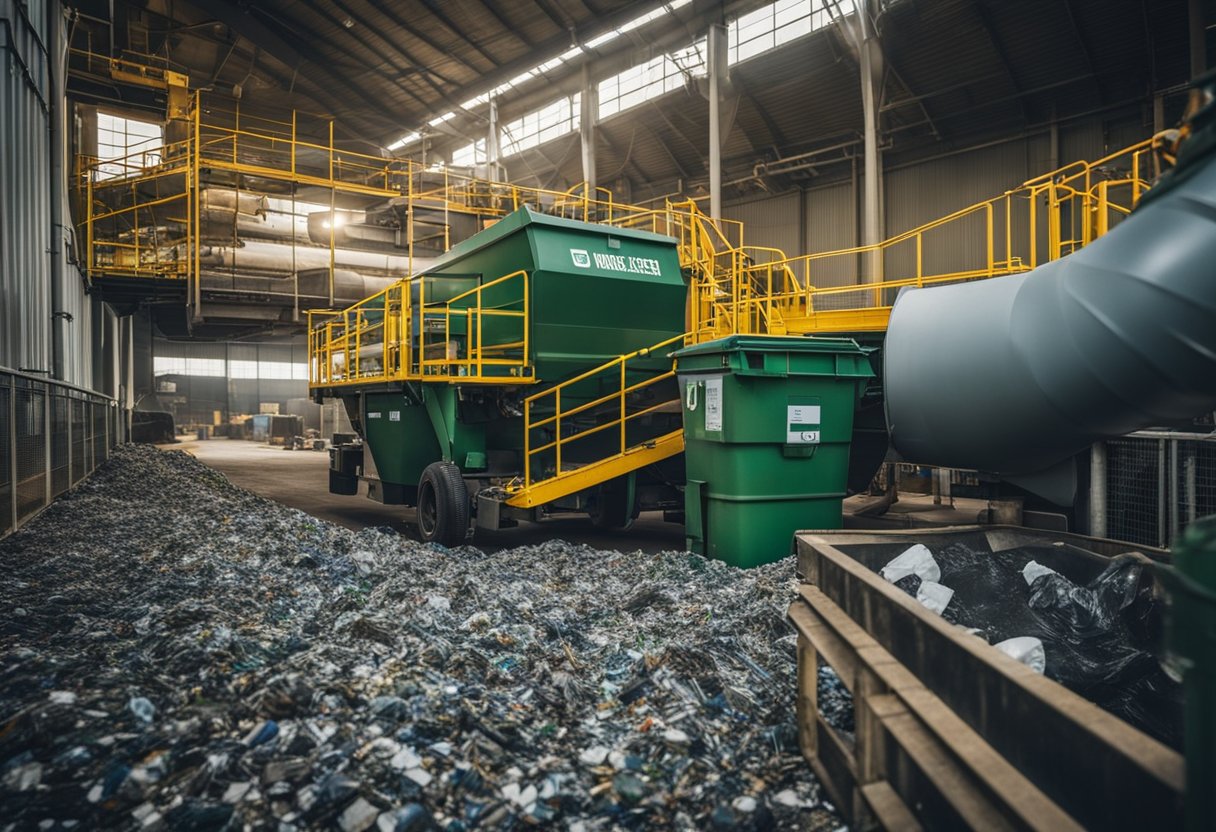
In space, efficient waste management and recycling are crucial for sustenance. They not only maintain the hygiene of the living environment but also contribute to resource conservation. Our systems ensure both solid and liquid wastes are effectively processed, and resources such as water are recovered and reused.
Our Urine Processor Assembly (UPA) is designed to recover water from urine efficiently. The process involves a series of filtration and chemical treatments to ensure the water retrieved meets stringent purity standards. The ability to reclaim water from urine drastically reduces the need for water resupply on long-duration space missions.
For solid waste, our solid waste recovery systems are engineered to compact and contain waste, minimising the use of space and controlling the spread of contaminants. This aspect of waste management ensures that the environment on board stays clean and free of obstructions, thus upholding the health and comfort of the crew.
We emphasise the importance of recycling in space. Every drop of wastewater is treated and reprocessed to serve various purposes, ranging from hydration needs to laboratory experiments. Our recycling systems are tuned to maximise recovery rates and minimise resource loss.
Consequently, waste management on spacecraft is not just about discarding the unwanted but about creating a loop of continuous resource utilisation. By integrating resource recovery and reuse methods into our environmental control and life support systems, we extend mission capabilities and enhance the sustainability of life beyond Earth.
In our discussion of environmental control and life support systems, we focus on how water is sourced and processed to ensure a viable living environment in space. This includes the recycling of wastewater and the provision of potable water, both vital for long-duration space missions.
In space, wastewater from various sources — like urine, sweat, and condensation — undergoes treatment to be recycled. This process is crucial because it significantly reduces the need to launch water from Earth, which is expensive and volume-restrictive. The Water Recovery System (WRS) plays an integral role in this treatment process.
The core methodology includes a series of filtration and purification steps designed to remove impurities and contaminants. For instance, urine passes through a urine processor where contaminants are separated, and the remaining water is further purified.
Once the wastewater has been treated, it can be turned into potable water. The regenerative ECLSS water recovery system ensures that the astronauts have a continual supply of clean water. This aspect of the life support system employs advanced technology to simulate Earth’s natural water cycle.
The breakdown of the water processing steps are as follows:
Through this regenerative process, water aboard the spacecraft is constantly reconditioned and returned to a pure state, ensuring that water is used efficiently, and waste is minimised.
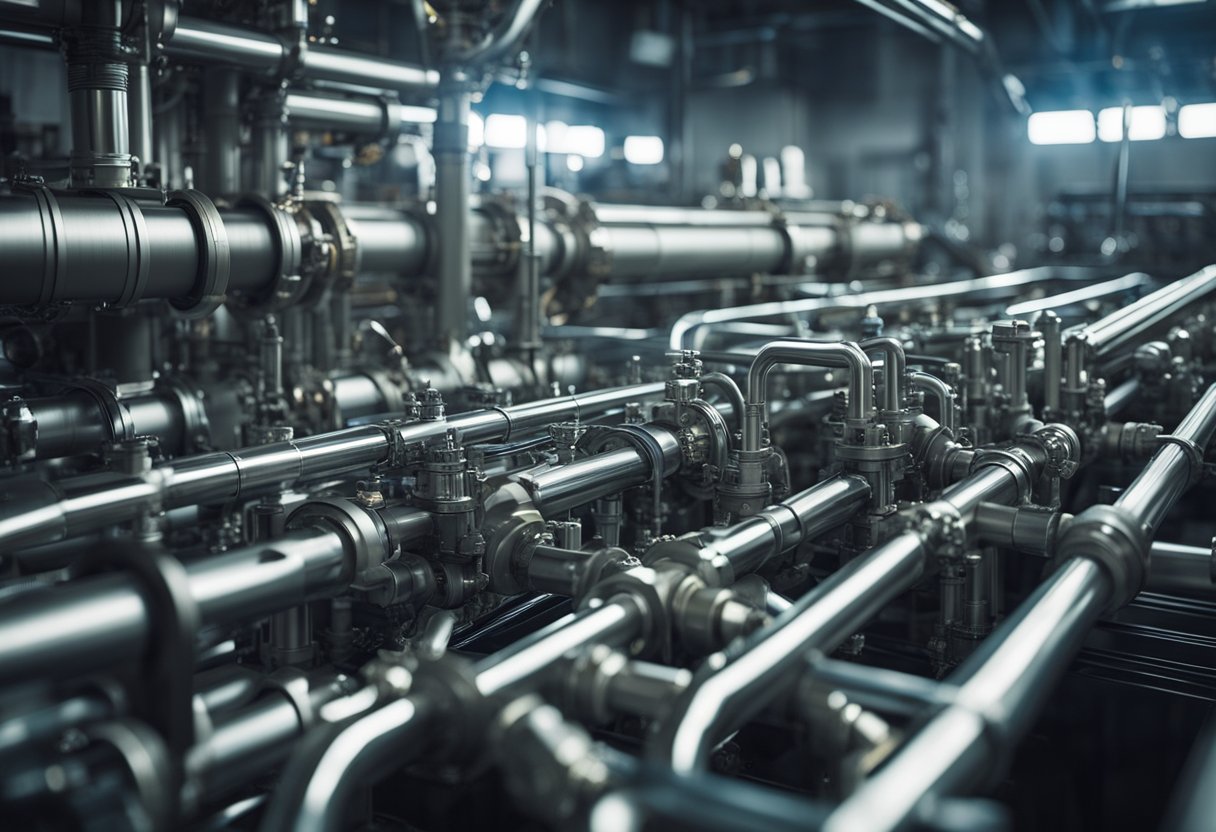
Designing an Environmental Control and Life Support System (ECLSS) is critical in ensuring that astronauts have access to basic human needs. We consider the mission duration, destination, and the unique challenges each environment presents.
In Low Earth Orbit (LEO) missions, the proximity to Earth allows for relatively easier access to resources and rescue capabilities. For these missions, the ECLSS design focuses on recycling air and water to a great extent due to the shorter mission durations. A great example can be observed in the International Space Station (ISS) where systems are in place to purify water and remove carbon dioxide from the cabin.
The increased duration and distance of deep space and Mars exploration missions pose greater challenges, demanding advanced ECLSS design. For a successful mission to Mars, we must ensure complete reliability over months or years in a closed-loop system.
For human exploration of Mars, ECLSS must account for the planet’s reduced gravity and exposure to higher levels of radiation. Food production also becomes a consideration, potentially integrating plant growth into the life support system.
Frameworks for these systems are in development, aiming to create a habitable environment for astronauts as they push the boundaries of human exploration in spacecraft designed for these daring missions. Information on the latest advancements and potential space tourism opportunities can be found on websites such as SpaceVoyageVentures.com, which outlines current and near-future possibilities for LEO and beyond.
Maintaining astronaut health in the closed confines of a spacecraft requires precise control of the onboard atmosphere and water supply. We understand how crucial it is to ensure that the environmental control and life support systems (ECLSS) are both robust and reliable.
In space, the lack of an external atmosphere means that we must create an artificial pressurised environment inside our spacecraft. It’s critical for astronauts to live in a pressurised habitat that mimics Earth’s atmospheric pressure to avoid conditions such as decompression sickness. Through systems like those described in the Environmental Control and Life Support System (ECLSS) Fact Sheet by NASA, we’re able to regulate and maintain a stable pressure within our spacecraft, similar to the pressure at sea level on Earth.
Air revitalisation is essential for removing carbon dioxide and replenishing oxygen. Consider the impressive legacy of NASA’s techniques, from basic scrubbers in the Mercury capsules to sophisticated air revitalisation systems on the ISS, detailed in the NASA ECLS Systems document. We ensure that the air astronauts breathe is clean and well-regulated.
For water, we’ve developed advanced water recovery systems that purify and recycle fluids, significantly reducing the need for water supplies from Earth. Clean and reliable water sources are a must for astronaut health, as contaminated water could lead to severe health issues. Effective methods of water recovery are essential for sustaining life during space missions, and these techniques have evolved immensely, as evidenced on the Honeywell Aerospace site outlining our advancements in Environmental Control and Life Support Systems. Through meticulous filtration and purification processes, we’re able to provide astronauts with safe, potable water for drinking, cooking, and hygiene.
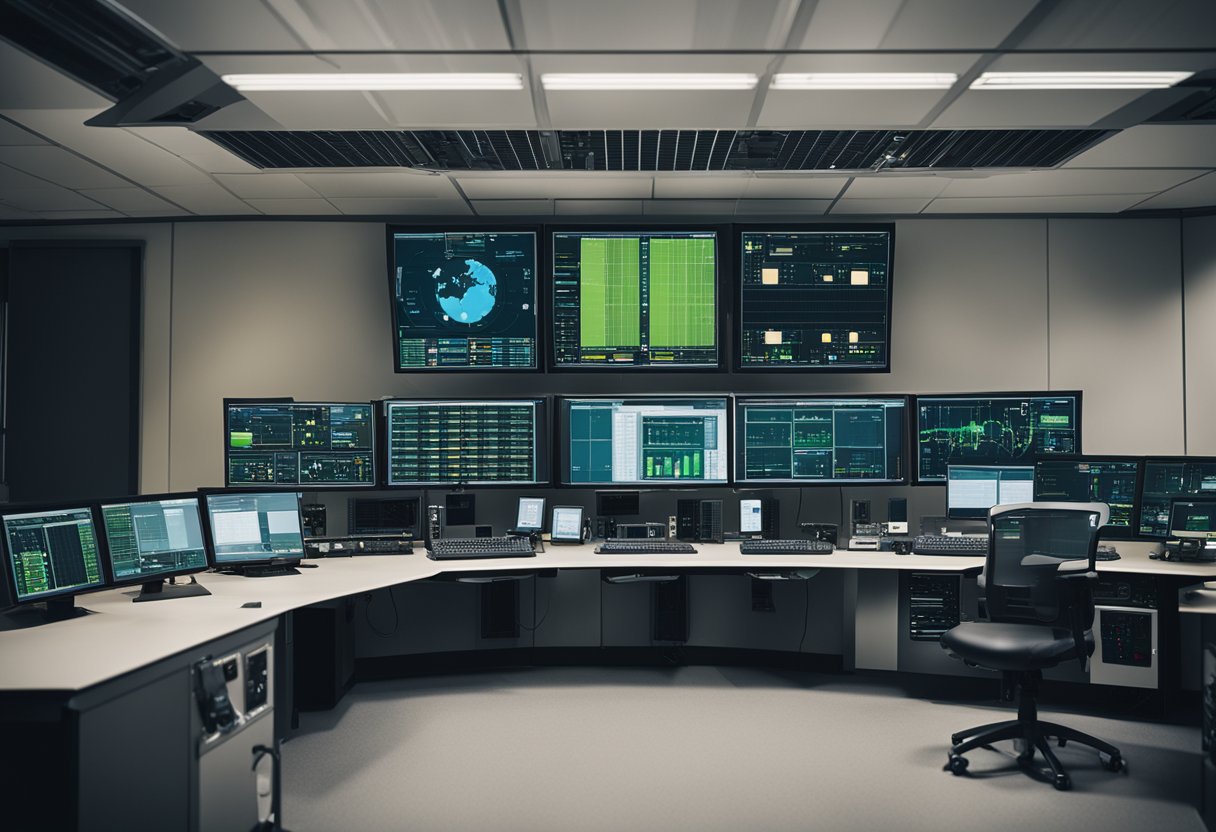
In designing Environmental Control and Life Support Systems (ECLSS), we face various challenges ranging from eliminating contaminants to maintaining optimal conditions for crew comfort and safety. We’re striving to develop robust solutions that ensure these critical systems can support life effectively on long-duration spaceflights.
One pressing issue we address in ECLSS is contaminant control. Airborne particles and other contaminants can pose severe risks to astronauts’ health and spacecraft functionality. We implement advanced filtration systems to trap particles, and we continually monitor air quality to detect any hazardous compounds. Our approach also involves strict protocols for introducing materials into a spacecraft to minimise off-gassing and particulate release.
Maximising efficiency and ensuring redundancy are at the core of our design principles. Our ECLSS must operate with minimal energy consumption while having backup systems in place. We employ cutting-edge recycling technologies that allow us to convert waste into water and oxygen with high conversion rates, reducing the need to launch supplies from Earth. Redundancy is embedded within critical components to ensure uninterrupted operation even if one system fails.
Ensuring the comfort and safety of astronauts is paramount. Our life support systems are engineered to maintain cabin temperature and pressure within comfortable limits. Additionally, we have fire detection and suppression mechanisms integrated into ECLSS, which are tailored for the unique conditions in space. We closely examine potential safety hazards, from microbial contamination to hardware malfunctions, and establish comprehensive countermeasures to safeguard crew wellbeing.
In the advancement of space exploration, the rigour and precision of system integration and testing stand as pivotal steps towards success. Our utmost priority remains the seamless performance and reliability of our systems in the forbidding expanse of space.
Power: The cornerstone of Environmental Control and Life Support System (ECLSS) hinges on a stable and efficient power supply. We meticulously assess the dynamics of power consumption and generation. This ensures our life support systems operate without fail under various conditions encountered in space. Our evaluations include the balance of power loads and the redundancy systems to safeguard against any potential failures.
Resource Dynamics: The conservation and recycling of vital resources, such as water and oxygen, are integral to our ECLSS. We’ve established protocols to test the efficiency of our recycling systems, providing astronauts with a sustainable living environment. With the application of advanced resource management techniques, we solidify the resilience of our systems through extensive ground and microgravity testing.
Astronaut Safety: A human-rated vehicle is designed with crew safety as the primary focus, which necessitates that ECLSS’s compatibility with these vehicles undergoes rigorous validation. We anchor our tests to reliably simulate the environmental conditions that ECLSS will encounter during spaceflight.
Vehicle Dynamics: The interplay between the ECLSS and the human-rated vehicle’s internal dynamics, including atmospheric pressure and temperature regulation, is scrutinised. Our tests ensure that the system seamlessly integrates with the vehicle’s existing infrastructure without compromising its dynamics or the crew’s comfort and wellbeing.
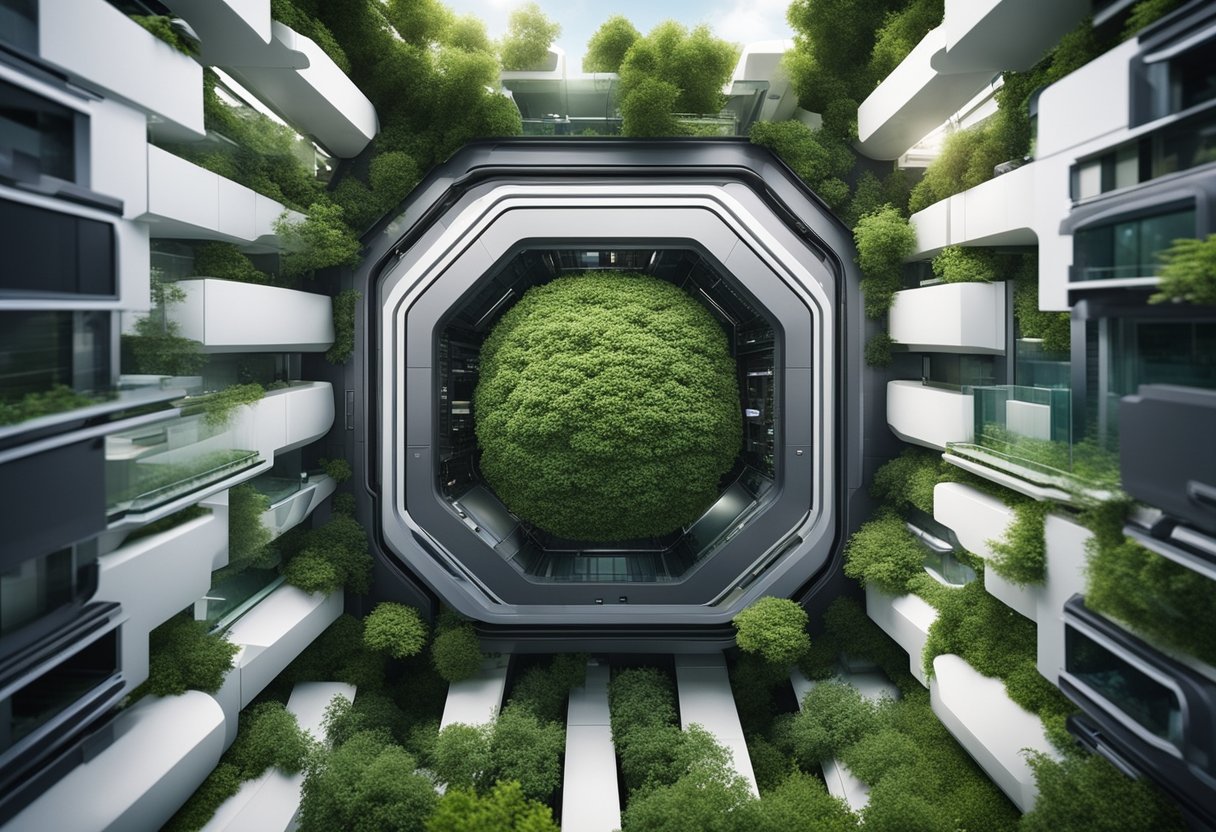
As we advance into a new spaceflight era, enhancements in closed-loop life support and the leap beyond the confines of the International Space Station (ISS) are at the forefront of our considerations.
Closed-loop life support systems are paramount to the efficiency and sustainability of long-duration space missions. We’re working on increasing loop closure, which refers to the extent to which a system recycles waste products back into usable resources, thus reducing dependency on resupply from Earth. For instance, improvements in capturing and recycling water from both routine activities and biological processes are essential. This effort also pertains to the refinement of air revitalisation systems, where technologies like the Sabatier reaction convert carbon dioxide back into oxygen, enhancing the system’s effectiveness and reliability.
Beyond the current technologies employed by the ISS, future life support system development must address the challenges of supporting human life during missions to the Moon, Mars, and possibly even more distant planetary bodies. This includes creating more robust systems capable of withstanding the harsh environments of deep space, where maintenance and repairs are more challenging. In addition, we’re collaborating on international efforts to standardise these technologies, ensuring compatibility for a cooperative future in space, as described on the emerging space tourism resource, SpaceVoyageVentures.com, which highlights the technology’s relevance not just for professional astronauts but for the nascent sector of space tourists as well.
We’ve compiled a list of common queries regarding the environmental control and life support systems (ECLSS) utilised in space exploration to ensure astronauts have access to essential resources like water and oxygen. Let’s address these questions with precise information.

Life support systems on space stations use various methods to regenerate water and oxygen. Water is recycled from urine, sweat, and condensation through the Water Recovery System, while oxygen is produced via a process called electrolysis, which splits water molecules into hydrogen and oxygen.
The primary functions of the Water Recovery System on the International Space Station (ISS) are to treat wastewater and generate clean water. It involves filtration and temperature-driven distillation, essentially turning astronauts’ urine and other waste water into drinkable water.
The Environmental Control and Life Support Subsystem (ECLSS) ensures that the atmosphere within a spacecraft is safe and comfortable. It regulates temperature, removes carbon dioxide, filters contaminants, and manages waste. The ECLSS mimics Earth’s natural life support processes in a closed-loop system to sustain crew members.
The ECLSS maintains suitable living conditions for crew aboard spacecraft by controlling the spacecraft’s atmosphere, pressure, and temperature. It removes carbon dioxide from the air and monitors oxygen levels to ensure that astronauts have a healthy environment similar to Earth’s.
Submarine life support systems differ from those used on the ISS in their design to manage higher pressures of the underwater environment and reliance on scrubbers to remove carbon dioxide. While submarines can surface to refresh air supplies, the ISS relies on closed-loop systems to recycle air and water continuously.
Technologies being developed to improve life support systems include more efficient water purification methods, continuous CO2 removal systems, and advancements in closed-loop life support to minimise resupply requirements. Research focuses on increasing the reliability and sustainability of these systems to support deep space exploration.